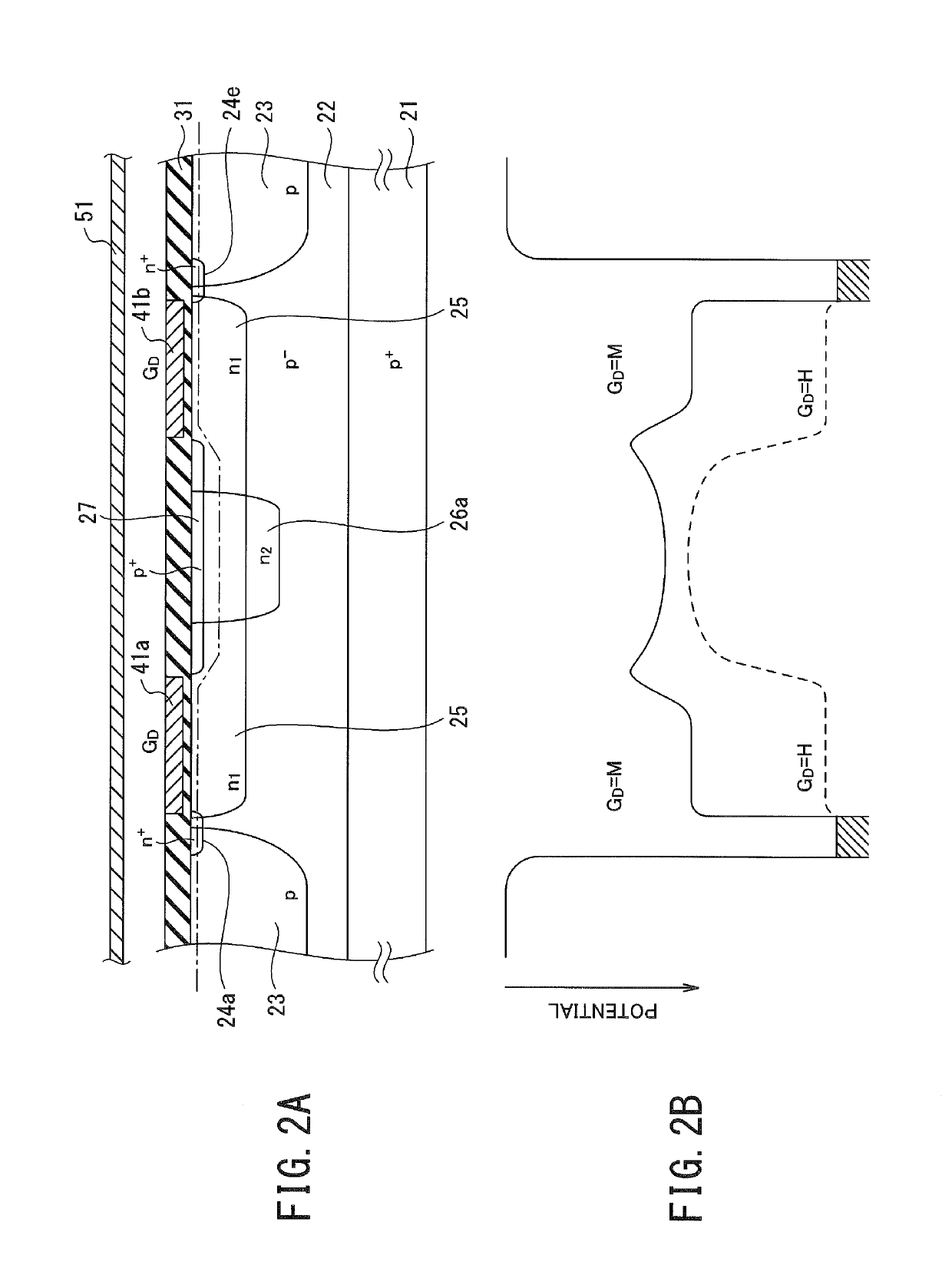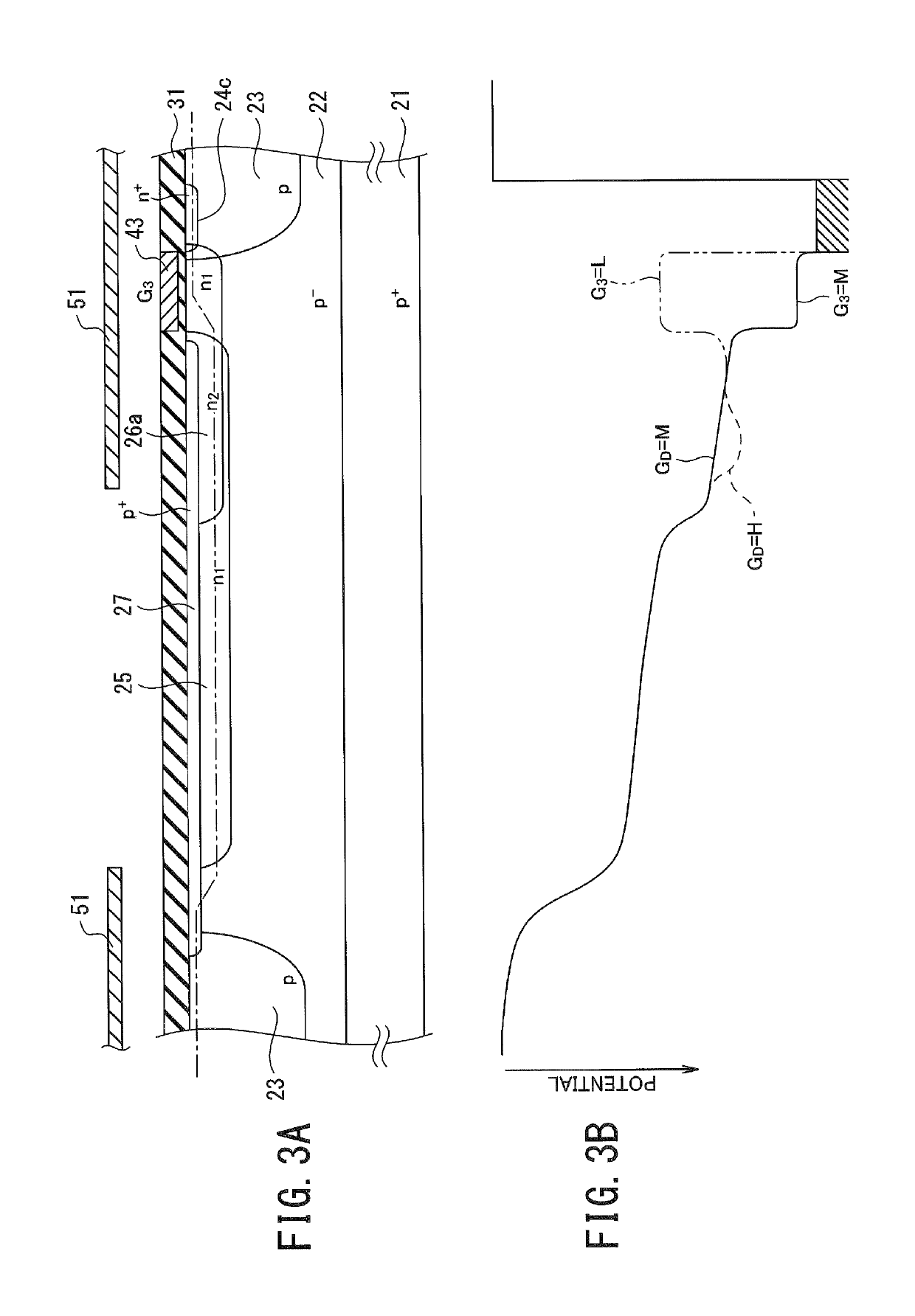Range sensor and solid-state imaging device
a solid-state imaging and sensor technology, applied in the field of range sensor and solid-state imaging devices, can solve the problems of large power consumption, large load capacitance of a plurality, dark current, etc., and achieve the effects of high sensitivity, high sensitivity, and high-speed modulation
- Summary
- Abstract
- Description
- Claims
- Application Information
AI Technical Summary
Benefits of technology
Problems solved by technology
Method used
Image
Examples
first embodiment
[0076](First Embodiment)
[0077]A range sensor according to the first embodiment of the present invention is a lock-in pixel including a shielding plate 51 having an aperture indicated by the dashed-dotted line in FIG. 1 defining a light-receiving area. As shown in the schematic plan view from above of the principal part of the range sensor in FIG. 1, the range sensor according to the first embodiment is provided with the shielding plate 51 including the aperture opened in a region corresponding to a photodiode of the light-receiving area, and further provided with a pixel region, excluding the aperture, covered with the shielding plate 51 so as to be shielded from light.
[0078]The range sensor according to the first embodiment serves as a lock-in pixel. As understood from the cross-sectional views of FIG. 2 to FIG. 4, the lock-in pixel includes a pixel layer 22 made of a semiconductor of a first conductivity type (p-type), the shielding plate 51 having the aperture and provided above ...
second embodiment
[0124](Second Embodiment)
[0125]A range sensor according to the second embodiment of the present invention is a lock-in pixel including a shielding plate 51 having an aperture indicated by the dashed-dotted line in FIG. 15 to define a light-receiving area. The range sensor according to the second embodiment fundamentally has the same structure as the range sensor according to the first embodiment, as shown in the cross-sectional views of FIG. 2 to FIG. 4, and serves as a lock-in pixel including: a pixel layer 22 made of a semiconductor of a first conductivity type (p-type); the shielding plate 51 having the aperture and provided above the pixel layer 22 to define the light-receiving area on the pixel layer 22 below the aperture; a surface-buried region 25 of a second conductivity type (n-type) selectively buried in the upper portion of the pixel layer 22 to implement a photodiode in the light-receiving area by forming a junction with the pixel layer 22, and extending from the light-r...
third embodiment
[0137](Third Embodiment)
[0138]A range sensor according to the third embodiment of the present invention is a lock-in pixel including a first surface-buried region 25u and a second surface-buried region 25v opposed in an interdigital manner inside a light-receiving area defined by a shielding plate 51 having a single aperture indicated by the dashed-dotted line as shown in the schematic plan view from above of the principal part in FIG. 16. Reference numeral 32b shown in FIG. 16 denotes an edge of a field insulating film. Namely, an area surrounded by the edge 32b defines an active area of the lock-in pixel. The range sensor according to the third embodiment thus includes two surface-buried regions in one pixel. As in the case shown in the cross sections of FIG. 2A, FIG. 3A and FIG. 4A, a p-type well region 23 is buried below the field insulating film (not shown).
[0139]When focused on the first surface-buried region 25u provided in the light-receiving area on the upper side in FIG. 1...
PUM
 Login to View More
Login to View More Abstract
Description
Claims
Application Information
 Login to View More
Login to View More - R&D
- Intellectual Property
- Life Sciences
- Materials
- Tech Scout
- Unparalleled Data Quality
- Higher Quality Content
- 60% Fewer Hallucinations
Browse by: Latest US Patents, China's latest patents, Technical Efficacy Thesaurus, Application Domain, Technology Topic, Popular Technical Reports.
© 2025 PatSnap. All rights reserved.Legal|Privacy policy|Modern Slavery Act Transparency Statement|Sitemap|About US| Contact US: help@patsnap.com



